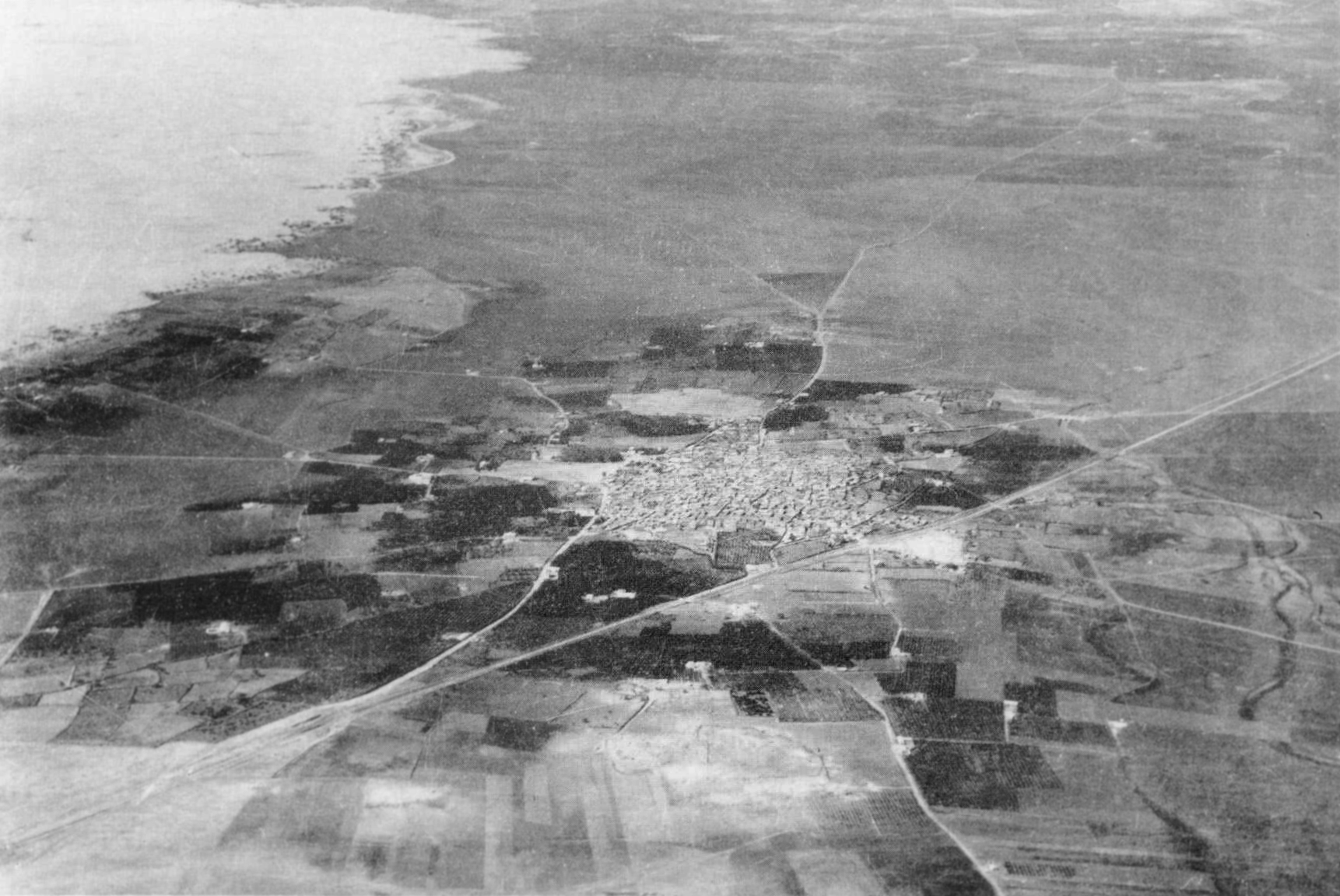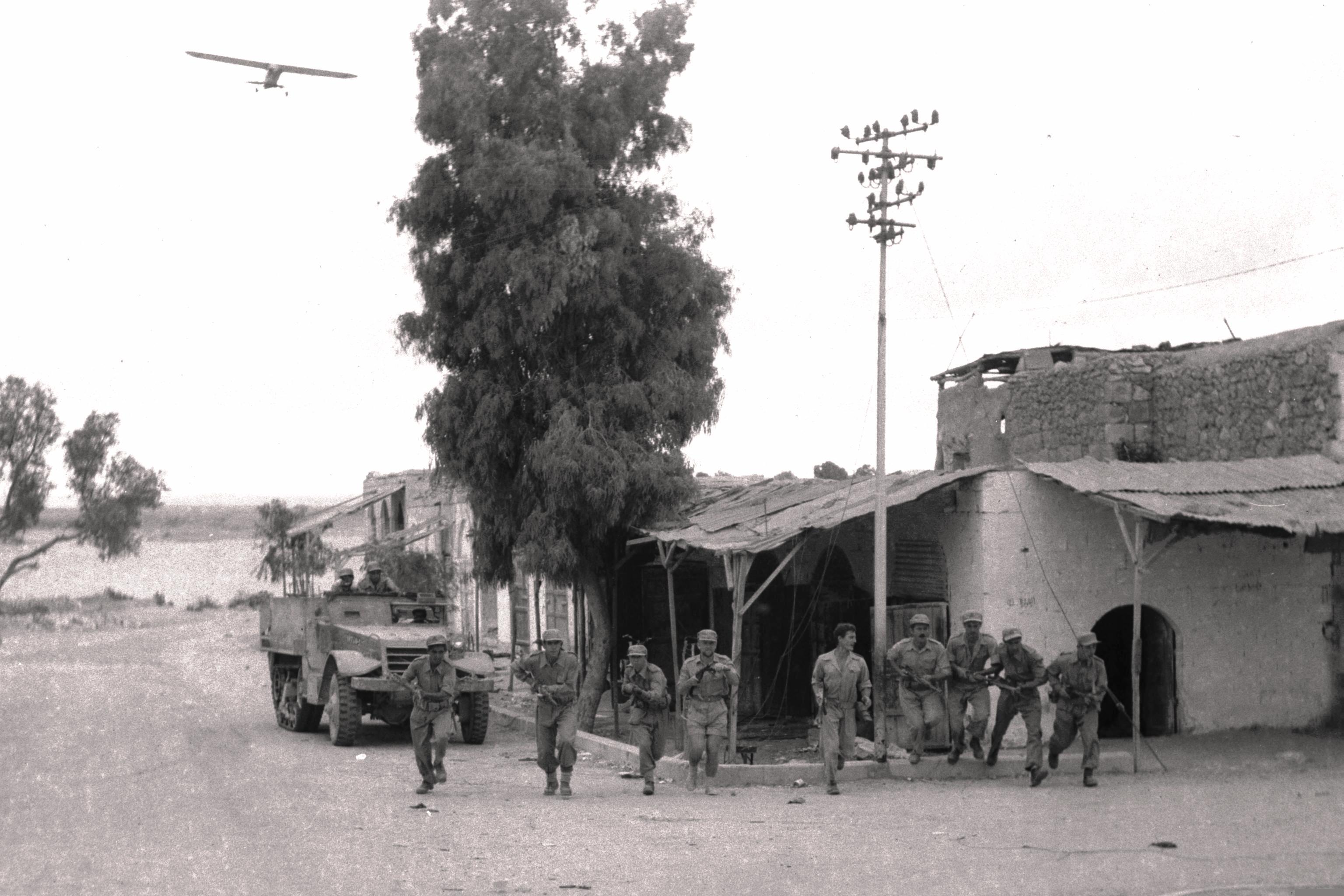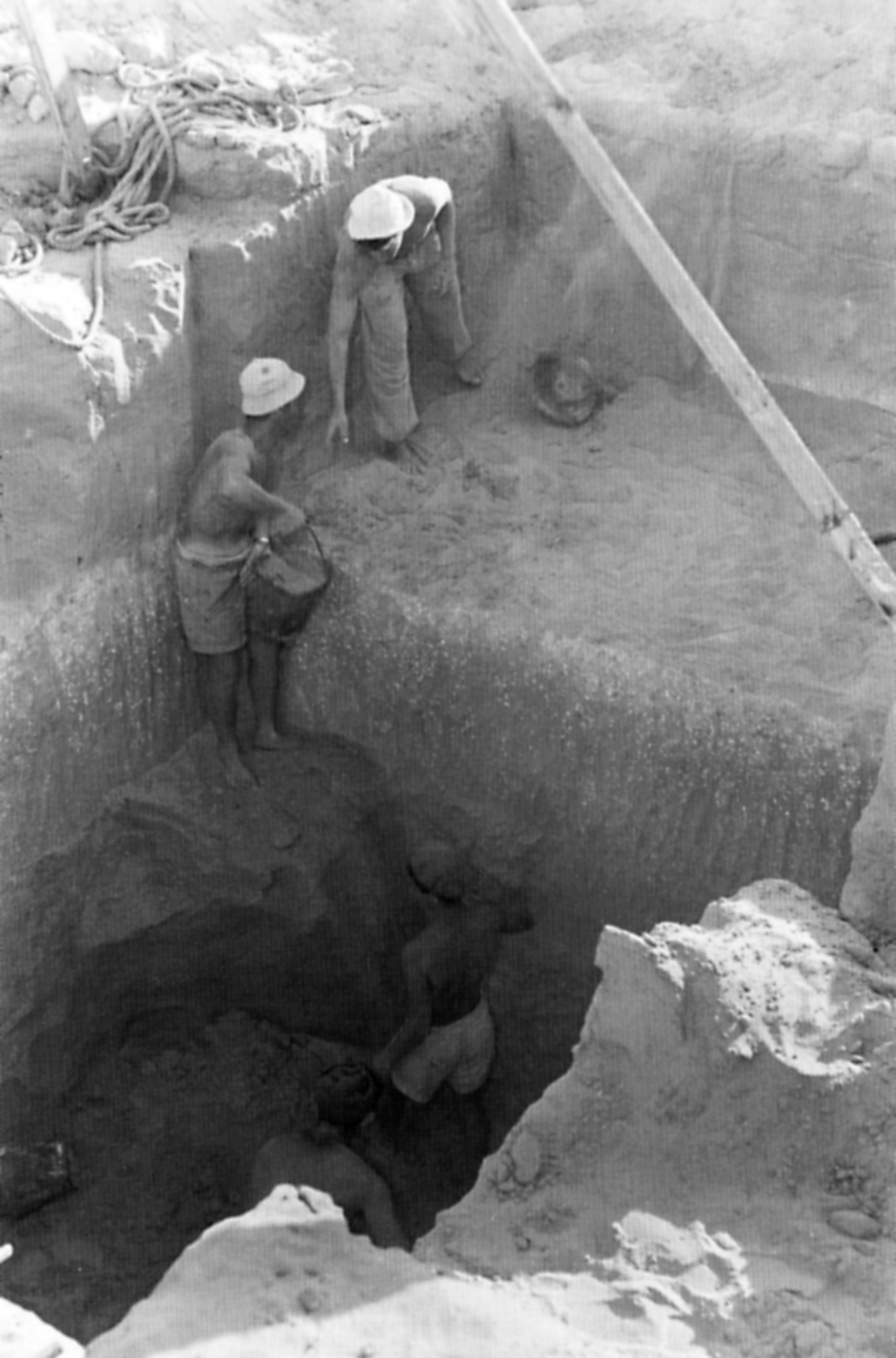|
Negev Brigade
The 12th Negev Brigade ( he, חטיבת הנגב, ''Hativat HaNegev'') is an Israeli reserve infantry brigade under the Sinai Division, that originally served in the 1948 Arab-Israeli war. History Founding and organization The brigade was founded in March 1948 with two battalions, the 2nd and 8th. The 7th Battalion was created in April, with the 9th Battalion being the last of the four. Yisrael Galili, the Haganah Chief of Staff, and Yigal Allon, the Palmach commander, chose Sarig to command the brigade in December 1947, although the residents of the Negev and David Ben-Gurion appointed Shaul Avigur instead, without Sarig's knowledge. After Avigur toured the Negev, he told Ben-Gurion that he would not be able to command the brigade, citing deteriorating health, and praised Sarig. It was commanded by Nahum "Sergei" Sarig (which is why it was also called ''Sergei Brigade'') and consisted of four Palmach battalions. The Negev Brigade participated in many operations in the Negev ... [...More Info...] [...Related Items...] OR: [Wikipedia] [Google] [Baidu] |
Negev Brigade
The 12th Negev Brigade ( he, חטיבת הנגב, ''Hativat HaNegev'') is an Israeli reserve infantry brigade under the Sinai Division, that originally served in the 1948 Arab-Israeli war. History Founding and organization The brigade was founded in March 1948 with two battalions, the 2nd and 8th. The 7th Battalion was created in April, with the 9th Battalion being the last of the four. Yisrael Galili, the Haganah Chief of Staff, and Yigal Allon, the Palmach commander, chose Sarig to command the brigade in December 1947, although the residents of the Negev and David Ben-Gurion appointed Shaul Avigur instead, without Sarig's knowledge. After Avigur toured the Negev, he told Ben-Gurion that he would not be able to command the brigade, citing deteriorating health, and praised Sarig. It was commanded by Nahum "Sergei" Sarig (which is why it was also called ''Sergei Brigade'') and consisted of four Palmach battalions. The Negev Brigade participated in many operations in the Negev ... [...More Info...] [...Related Items...] OR: [Wikipedia] [Google] [Baidu] |
Highway 25 (Israel)
Highway 25 is a rural highway in southern Israel. It begins northwest of Nahal Oz at the border with the Gaza Strip, and it passes through Netivot, Beersheba and Dimona. It continues southeast toward Arava Junction, where it meets Highway 90. Its length is estimated by the Israeli Department of Transportation as 172 km and 780 meters. Junctions & Interchanges Hazardous road Highway 25 was declared as a red road by the Israeli police in 2015. See also * List of highways in Israel This is a list of Israeli highways. Besides highways in Israel proper, it includes highways in the West Bank and the Golan Heights, because the Israeli administration maintains them in these areas. There are 48 designated Israeli highways. Most of ... References {{Reflist 25 ... [...More Info...] [...Related Items...] OR: [Wikipedia] [Google] [Baidu] |
Be'er Sheva
Beersheba or Beer Sheva, officially Be'er-Sheva ( he, בְּאֵר שֶׁבַע, ''Bəʾēr Ševaʿ'', ; ar, بئر السبع, Biʾr as-Sabʿ, Well of the Oath or Well of the Seven), is the largest city in the Negev desert of southern Israel. Often referred to as the "Capital of the Negev", it is the centre of the fourth-most populous metropolitan area in Israel, the eighth-most populous Israeli city with a population of , and the second-largest city in area (after Jerusalem), with a total area of 117,500 dunams. The Biblical site of Beersheba is Tel Be'er Sheva, lying some 4 km distant from the modern city, which was established at the start of the 20th century by the Ottoman Turks. The city was captured by the British-led Australian Light Horse in the Battle of Beersheba during World War I. The population of the town was completely changed in 1948–49. ''Bir Seb'a'' ( ar, بئر السبع), as it was then known, had been almost entirely Muslim and Christian, and wa ... [...More Info...] [...Related Items...] OR: [Wikipedia] [Google] [Baidu] |
Battle Of Abu-Ageila (1967)
The Battle of Abu-Ageila (also known as the Battle of Umm-Qatef; ) was a military confrontation between the Israel Defense Forces and the Egyptian Army in the Six-Day War of June 1967. The decisive defeat of the Egyptians was critical to the eventual loss of the entire Sinai Peninsula to Israel. Leading Israeli forces was Major General Ariel Sharon, later a prominent politician and prime minister of Israel. Background The Israeli attack at Abu-Ageila was part of the Israeli offensive into the Sinai Desert. Southern Command's offensive consisted of three divisions: Israel Tal's 84th Division, Avraham Yoffe's 31st Division, and Ariel Sharon's 38th Division. Sharon was tasked with the capture of the road junction at Abu-Ageila, in order to gain access to the central route into the Sinai Desert. The Egyptians had taken considerable preparations to prevent a breach there. Egyptian defences had focused on the Um-Katef (or Umm-Qatef) plateau to the east of Abu-Ageila, roughly ... [...More Info...] [...Related Items...] OR: [Wikipedia] [Google] [Baidu] |
Operation Pleshet
Operation Pleshet ( he, מִבְצָע פְּלֶשֶׁת, ''Mivtza Pleshet'', lit. "Operation Philistia"), named after the Pleshet, geographical region where it took place, was an Israeli military operation during the 1948 Arab–Israeli War. It was carried out from May 29 to June 3, 1948, in the Isdud/Ad Halom area of the southern front, against the Egyptian Army. The aim of the operation was to capture Isdud and stop the Egyptian advance northwards. While only the June 2–3 engagements are officially named Operation Pleshet, the events immediately preceding are historiographically joined with it. The preceding events consisted of an aerial bombardment, followed by small-scale Israeli harassment of the Egyptian lines, and later a ground assault (Operation Pleshet). The original plan was to attack on June 1–2, but this was canceled due to an impending ceasefire, and re-attempted on June 2–3. The Israelis, under the Givati Brigade's umbrella command, attacked in two main forc ... [...More Info...] [...Related Items...] OR: [Wikipedia] [Google] [Baidu] |
Operation Uvda
Operation Uvda ( he, מבצע עובדה, ''Mivtza Uvda'') was an operation conducted by the Israel Defense Forces during the 1948 Arab-Israeli War, from March 5 to March 10, 1949. It was the last campaign undertaken by the IDF during the war and its objective was to capture the southern Negev desert, which was claimed by the Kingdom of Jordan to be under Jordanian control in the armistice talks of 1949. The southern Negev was designated to be part of the Jewish State in the 1947 UN Partition Plan. The name ''uvda'' (עובדה) is Hebrew for "fact", referring to the operation's objective to establish de facto Israeli sovereignty over the territory in question, rather than actually conquer it. As such, the Israeli forces did not meet significant resistance on their way. The region claimed during this operation is now referred to as Uvda. The Negev, Golani and Alexandroni brigades participated in the operation, as well as a number of smaller units. Prior reconnaissance In Jan ... [...More Info...] [...Related Items...] OR: [Wikipedia] [Google] [Baidu] |
Operation Horev
Operation Horev was a large scale offensive against the Egyptian army in the Western Negev at the end of the Arab–Israeli War in 1948 and 1949. Its objective was to trap the Egyptian Army in the Gaza Strip. The operation started on 22 December 1948 and ended on 7 January 1949, after the British threatened to intervene. ''Horev'' is the name given in the Scriptures for Mount Sinai, where the Israelites encamped for a year (Exodus 3:1 and Psalms 106:19): in modern parlance it is called the '' Jebel Musa'' ("Mount of Moses" in Arabic). Objectives The first objective of the offensive was the Egyptian army units defending al-Auja on the Palestinian-Egyptian border. From there the major thrust was to the Egyptian army bases at El-Arish. This would trap the majority of the Egyptian army in the Gaza Strip. The operation's commander was Yigal Alon. Five Israeli brigades were involved: The 8th Armoured Brigade commanded by Yitzhak Sadeh; the Negev Brigade; the Golani Brigade; the Ha ... [...More Info...] [...Related Items...] OR: [Wikipedia] [Google] [Baidu] |
Operation An-Far
Operation An-Far (short for Anti-Farouk) was a military operation launched by Israel's Givati Brigade on the night of July 8–9 during the 1948 Arab–Israeli War. Its objectives were to gain control of approaches in southern Judea and block the advance of the Egyptian army. The fighting continued until July 15, and was followed by Operation Death to the Invader. Background On the ending of the first United Nations Truce on July 8, most of the Israeli army's attention and resources were focused on Operations Danny and Dekel. In the south, the Negev and Givati Brigades failed to link up. But in ten days, the Givati Brigade did succeed in "conquering areas in the northern Negev and in the western Hebron district foothills." Operation Operational Commander Shimon Avidan held meetings at brigade headquarters on July 5 at which plans were outlined. In the first phase, the 1st Battalion was to attack the Tell es-Safi area. The second phase was towards Beit 'Affa, Hatta and Jusayr ... [...More Info...] [...Related Items...] OR: [Wikipedia] [Google] [Baidu] |
Operation Barak
Operation Barak ( he, מבצע ברק, ''Mivtza Barak'', lit. ''Operation Lightning'') was a Haganah offensive launched just before the end of the British Mandate in Palestine. It was part of Plan Dalet. Its objective was to capture villages North of Gaza in anticipation of the arrival of the Egyptian army. It was undertaken by the newly formed Giv'ati brigade, commanded by Shimon Avidan. Background Operational orders defined the Giv'ati brigades objectives as: "To deny the enemy a base ... creating general panic and breaking his morale ... cause the flight of the inhabitants of the smaller settlements in the area." Commander Avidan's instructions were: "You will determine alone, in consultation with your Arab affair advisers and Intelligence Service officer, the villages in your zone that should be occupied, cleaned up or destroyed." According to historian Benny Morris, Avidan preferred the latter option.As a prelude, the Giv'ati brigade's first action took place on 4 May 1948 w ... [...More Info...] [...Related Items...] OR: [Wikipedia] [Google] [Baidu] |
Battle Of Beersheba (1948)
The Battle of Beersheba, codenamed Operation Moses ( he, מִבְצָע מֹשֶׁה, ''Mivtza Moshe''), was an Israeli offensive on Beersheba on October 21, 1948. It was part of Operation Yoav and was conducted at the end of the operation. It was made possible following the opening of a land corridor from the Negev desert to the rest of Israel in the Battles of the Separation Corridor. The capture had both military and political significance. It helped sever the supply route of the Egyptian expeditionary force's eastern wing, and strengthened Israel's claim to the Negev desert. The attack started at 04:00 on October 21, and involved the Negev Brigade and the 89th Battalion of the 8th Brigade. It ended at 09:15, when the Egyptians surrendered the town's police station. Background The modern Beersheba was founded in the late 19th century, as part of a policy by Abdul Hamid II to build and expand population centers in the desert regions of the Ottoman Empire (others included Jera ... [...More Info...] [...Related Items...] OR: [Wikipedia] [Google] [Baidu] |
Battle Of Nirim
The Battle of Nirim, was a military engagement between the Egyptian army and the Jewish Haganah on May 15, 1948, the first day of the Egyptian invasion of Israel in the 1948 Arab–Israeli War. It was fought in kibbutz Nirim, founded just two years earlier as part of the 11 points in the Negev. The Egyptian 6th Battalion attacked about 40 Israeli defenders at dawn on May 15, backed by armored vehicles, mortars, cannons and aircraft. They failed to take the village and retreated about 7 hours later, leaving behind about 30–35 dead. Background The first stage of the 1948 War, referred to as the 1947–1948 Civil War in Mandatory Palestine, started following the ratification of UN Resolution 181 on November 29, 1947, which granted Israel the mandate to declare independence, dividing the Mandate into a Jewish state and an Arab state. The state of Israel was declared on May 14, 1948, and the next night, the armies of a number of Arab states invaded Israel and attacked Israeli posi ... [...More Info...] [...Related Items...] OR: [Wikipedia] [Google] [Baidu] |





